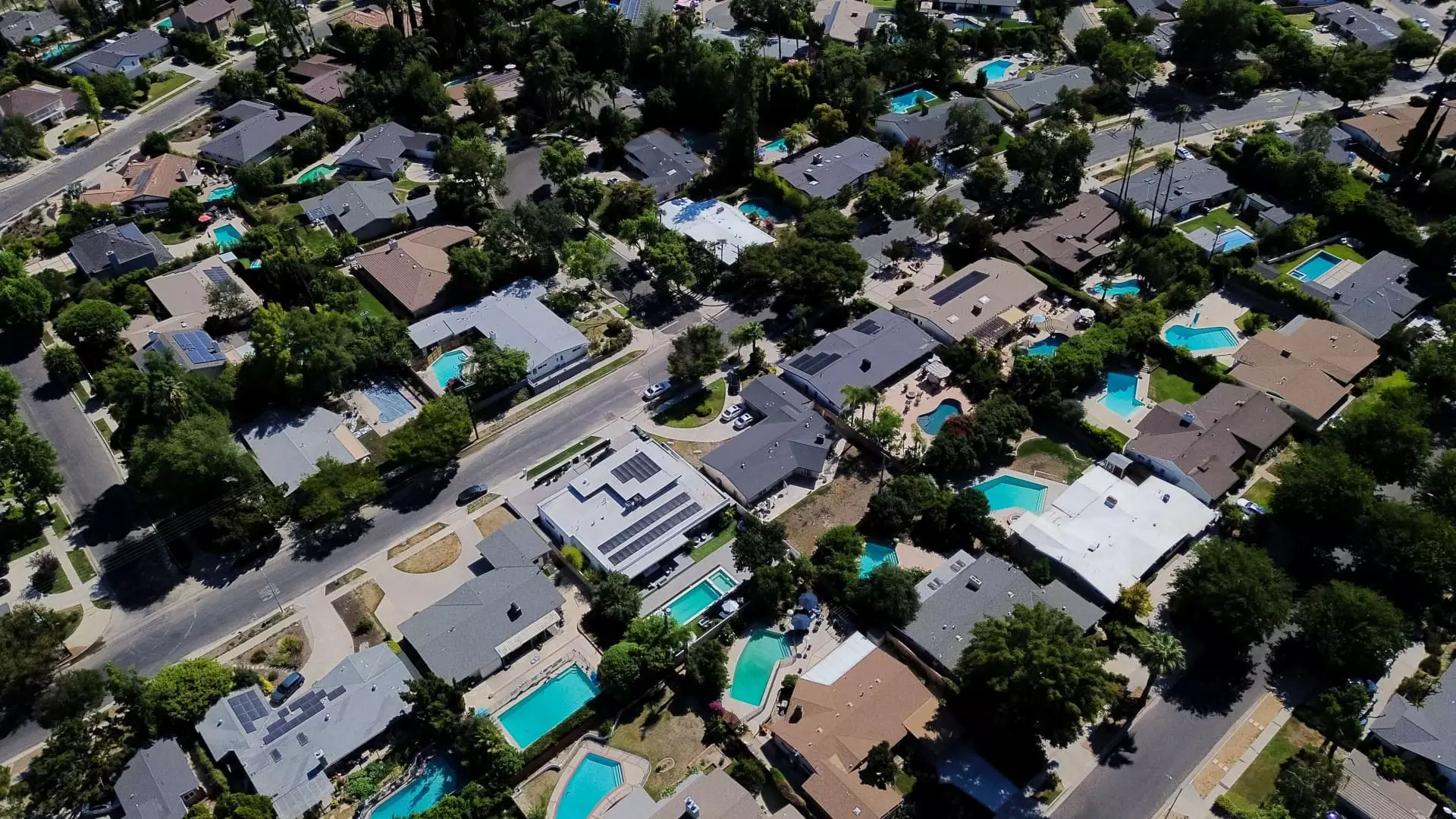Recent data shows a sharp 2.7% drop in existing home sales for June, a figure that starkly outpaces the modest 0.7% decline expected by analysts. While on the surface this might seem like a minor fluctuation, it underscores a substantial underlying weakness: the housing market’s inability to sustain growth amid stubbornly high mortgage rates. This decline is symptomatic of a broader economic malaise, where affordability stagnates and buyer enthusiasm diminishes, revealing a fragile sector increasingly disconnecting from real economic vitality.
What is critical here is that these figures reflect only those homes that have closed, which means the true pulse of housing activity is even more complicated. The lagging effect of rate hikes—peaking above 7% in April and May—has sidelined countless potential buyers. Despite some stabilization in mortgage rates around 6.77%, this remains a significant barrier. The hesitation and retreat are justified; higher borrowing costs are turning a once accessible dream into an insurmountable obstacle for first-time buyers and undercutting genuine market dynamism.
This pattern raises an urgent question: Are we witnessing the foundations of a housing bubble being reinforced by artificially constrained demand? If mortgage rates were to dip below 6%, proponents suggest we could see roughly 160,000 additional buyers stepping into the market. This indicates that the current market is less a sign of health and more a symptom of artificially constrained liquidity. The economy’s broader uncertainties are fueling this stagnation, reflecting not just housing market malaise but also a fragile financial environment that can unravel with even minor shocks.
Supply Is Growing, but Still Insufficient to Balance the Market
While it’s encouraging to see inventory levels rise—up nearly 16% year over year to 1.53 million units—the market remains far from balanced. A 4.7-month supply at current sales rates indicates a still-tight market, especially given that a six-month inventory is what defines equilibrium. This shortage continues to favor sellers, especially at the upper end, which is where the future of housing demand is increasingly concentrated.
The growing supply points to a critical misalignment: home construction has lagged significantly behind population growth for years, creating an environment where demand outstrips supply. This isn’t merely a cyclical fluctuation; it’s a structural defect rooted in policy neglect, zoning resistance, and an uncoordinated response to demographic shifts. The resulting high prices become a barrier, effectively blocking many first-time buyers from participating. This persistent undervaluation of supply contributes to record-high median prices—$435,300 in June—the 24th consecutive month of year-over-year increases.
The situation portrays a market where scarcity drives up prices, not genuine demand, but rather the desperate suppression of supply. This artificially maintained tension favors high-end sellers who are still seeing prices surge by nearly 14%. Meanwhile, homes under $100,000 are declining in number, making affordable options increasingly scarce and further suppressing opportunities for those at the earliest stages of wealth accumulation. This amassing inequality in access to homeownership is a troubling sign of a housing market that benefits the wealthy at the expense of middle and lower-income households.
Economic Inequality and Market Distortion: Who Really Benefits?
The stark divide between high-end and entry-level housing sales underscores a troubling trend: the market continues to cater predominantly to the affluent. The percentage of all-cash deals remains elevated at 29%, more than doubling pre-pandemic levels and signaling a growing influence of investors and speculators rather than individual homebuyers. This influx of cash buyers further skews the affordability landscape, locking out average Americans from genuine ownership opportunities.
Additionally, the decline in first-time homebuyers, who now constitute only 30% of sales compared to a historical 40%, highlights a widening chasm in economic mobility. The rising wealth of current homeowners—who saw an average increase of nearly $141,000 over five years—contrasts sharply with the limited ability of newcomers to participate. This disparity hints at a housing market increasingly skewed towards preserving wealth within a select few while impoverishing others with limited access and opportunity.
Meanwhile, the increased duration homes spend on the market—rising from 22 to 27 days—may seem trivial but signals a cooling off for average buyers. The relatively brisk market for high-end homes, selling faster than those under $500,000, confirms that the wheels of inequality turn more rapidly at the top. This disparity calls into question whether the housing market still functions as a ladder of upward mobility or has become an instrument of wealth consolidation that further entrenches economic divides.
By allowing this distorted market to persist, policymakers risk reinforcing structural inequalities that threaten long-term social stability. These trends suggest that the housing sector no longer serves as a true barometer of economic health but as a reflection of systemic disparities and misaligned priorities. If we continue down this path, the dream of homeownership for many will remain just that—a distant aspiration, while the wealthy continue to accumulate and consolidate power in the housing landscape.


Leave a Reply